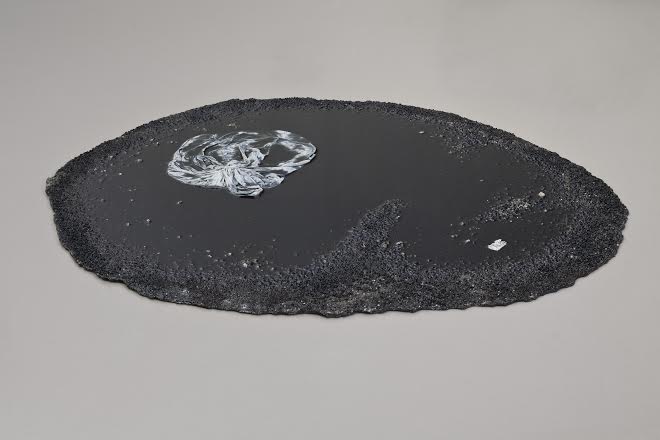The Registry of Promise #1 – The Promise of Melancholy and Ecology

‘The Registry of Promise’ è un progetto diviso in una serie di mostre che riflettono sulla nostra relazione sempre più preoccupante con ciò che il futuro potrebbe o meno avere in serbo per noi.
Comunicato stampa
‘The Registry of Promise’ è un progetto diviso in una serie di mostre che riflettono sulla nostra relazione sempre più preoccupante con ciò che il futuro potrebbe o meno avere in serbo per noi. Le quattro mostre si concentrano e fanno leva su varie letture del significato di una promessa, da intendere come un qualcosa che nello stesso tempo anticipa un futuro - il suo compiersi o venire meno – ma che può anche esprimere una sorta di inevitabilità, sia positiva che negativa. Tale polivalenza assume una particolare intensità nell’attuale momento storico. Poichè le nozioni scientifiche e tecnologiche di progresso, inaugurate dall’Illuminismo, non hanno più lo stesso valore di un tempo, ormai abbiamo abbandonato l’illuministica visione lineare del futuro una volta presagita. Tuttavia, ciò che viene a sostituire la nostra passata concezione non sembrerebbe affatto un’alternativa: lo spettro incombente di una globale catastrofe ecologica. Partendo dalla promessa antropocentrica della modernità, a quanto pare, abbiamo ripiegato su una fede negativa nel post-umano. Eppure il futuro non è necessariamente un libro chiuso. Lontano da una visione fatalistica,‘The Registry of Promise’ al contrario prende in considerazione queste diverse modalità del futuro cerando di concepirne delle altre. Nel fare ciò cerca di valorizzare la potenziale polivalenza e mutevolezza del termine ‘promessa’.
Svolgendosi nel corso di un anno, ‘The Registry of Promise’ si compone di quattro mostre autonome e interconnesse che possono essere lette come singoli capitoli di un libro. Il progetto s’inaugura con la mostra ‘The Promise of Melancholy and Ecology’, presso la Fondazione Giuliani, alla quale seguono ‘The Promise of Multiple Temporalities’, al Parc Saint Léger Centre d'art contemporain, ‘The Promise of Moving Things’, presso Centre d'art contemporain d'Ivry - le Crédac, per concludersi con ‘The Promise of Literature, Soothsaying and Speaking in Tongues’, presso SBKM/De Vleeshal.
‘The Promise of Melancholy and Ecology’ affronta la nostra sempre più misera e conflittuale relazione con la natura. Così come tanti freudiani malinconici, siamo incapaci a quanto pare di piangere nel modo giusto la perdita di ciò che possiamo comprendere solo in modo imperfetto e parziale – ossia la natura o la nostra concezione di essa – perchè non possiamo più separarla dal nostro ego. Questa mostra esplora la nostra percezione della natura sentendola come un qualcosa di remoto, per gran parte di dominio di un passato irrecuperabile che può essere rappresentato soltanto attraverso l’estinzione, come nelle foto di Jochen Lempert dell’Alca Impennis, o Great Auk, una specie scomparsa a metà del diciannovesimo secolo. Nel corso degli ultimi vent’anni, Lempert ha fotografato 35 dei 78 esemplari estinti che si trovano nei musei di storia naturale di tutto il mondo. Le strazianti sculture in bronzo e carbone di animali mutilati dell’artista francese Jean-Marie Perdrix - realizzate con la tecnica della cera persa – affrontano analogamente il tema di una passata intimità con la natura, ma la cui infernale indessicalità non può che evocare direttamente Pompei. I tenebrosi assemblaggi detritici dell’artista belga Peter Buggenhout tendono verso una rivisitazione del concetto di ‘naturale’, investendo materiali industriali di una qualità quasi organica. Infine, le oscure pozzanghere di resina dell’artista olandese Marlie Mul, a volte modulate con mozziconi di sigaretta e sacchetti di plastica, assumono una forza di persuasione inquietante in questo contesto, come se fossero gli unici fluidi plausibili a disposizione della nostra concezione sempre più desolata della natura. Eppure nonostante tutta la sua apparente oscurità, i lavori in questa mostra sono nel complesso gesti rivolti alla possibilità che la nostra percezione di ciò che mirano a preservare invece di compiangere, potrebbe essere meno flessibile della natura stessa.
‘The Registry of Promise’ è una co-produzione di Fondazione Giuliani, Parc Saint Léger Centre d'art contemporain, Centre d'art contemporain d'Ivry - le Crédac e SBKM/De Vleeshal.
www.fondazionegiuliani.org | www.parcsaintleger.fr | www.credac.fr | www.vleeshal.nl
Il progetto si inserisce nell’ambito di PIANO, piattaforma preparata per l’arte contemporanea, Francia–Italia 2014-2015, concepita da d.c.a / association française de développement des centres d’art, in partnership con l’Institut français d’Italie, l’Ambasciata di Francia in Italia e l’Institut français, con il sostegno del Ministère des Affaires étrangères et du Développement international, del Ministère de la Culture et de la Communication e della Fondazione Nuovi Mecenati. www.pianoproject.org.
‘The Registry of Promise’ is a series of exhibitions that reflect on our increasingly fraught relationship with what the future may or may not hold in store for us. These exhibitions engage and play upon the various readings of promise as something that simultaneously anticipates a future, its fulfillment or lack thereof, as well as a kind of inevitability, both positive or negative. Such polyvalence assumes a particular poignance in the current historical moment. Given that the technological and scientific notions of progress inaugurated by the enlightenment no longer have the same purchase they once did, we have long since abandoned the linear vision of the future the enlightenment once betokened. Meanwhile, what is coming to substitute our former conception would hardly seem to be a substitute at all: the looming specter of global ecological catastrophe. From the anthropocentric promise of modernity, it would seem, we have turned to a negative faith in the post-human. And yet the future is not necessarily a closed book. Far from fatalistic, ‘The Registry of Promise’ takes into consideration these varying modes of the future while trying to conceive of others. In doing so, it seeks to valorize the potential polyvalence and mutability at the heart of the word promise.
Taking place over the course of approximately one year, ‘The Registry of Promise’ consists of four autonomous, inter-related exhibitions, which can be read as individual chapters in a book. It is inaugurated by ‘The Promise of Melancholy and Ecology’ at the Fondazione Giuliani, which will be followed by ‘The Promise of Multiple Temporalities’ at Parc Saint Léger Centre d'art contemporain, then ‘The Promise of Moving Things’ at Centre d'art contemporain d'Ivry - le Crédac, and will conclude with ‘The Promise of Literature, Soothsaying and Speaking in Tongues’ at SBKM/De Vleeshal.
Part one, ‘The Promise of Melancholy and Ecology’, addresses our increasingly forlorn and conflicted relationship with nature. Like so many Freudian melancholics, we are, it seems, unable to properly mourn the loss of something we can only imperfectly and incompletely grasp – nature, or our conception of it – because we can no longer separate it from our own egos. Thus this exhibition explores our perception of nature as something remote, largely of the domain of the unrecoverable past, and which can only be represented through extinction, as in the photos of Jochen Lempert of the Alca Impennis, or the Great Auk, which went extinct in the middle of the 19th century. Over the course of the past twenty years, Lempert has photographed 35 of the 78 extent examples, which can be found in natural history museums all over the world. The harrowing bronze and carbon sculptures of truncated animals by the French artist Jean-Marie Perdrix, which are made with the lost wax technique, speak to a similarly bygone intimacy with nature, but one whose infernal indexicality cannot but directly evoke Pompeii. The Belgian artist Peter Buggenhout’s tenebrous detrital assemblages tend toward a revised conception of the so-called natural by investing industrial materials with a quasi-organic quality. Finally, Dutch artist Marie Mul’s dark resin puddles, occasionally inflected with cigarette butts and plastic bags, assume a disturbing cogency in this context, as if they were the only plausible fluids available to our increasingly desolate conception of nature. And yet for all its apparent gloom, the work in this exhibition nevertheless collectively gestures toward the possibility that our perception of what it seeks to preserve, as opposed to mourn, might be less flexible than nature itself.
‘The Registry of Promise’ is a co-production of Fondazione Giuliani, Parc Saint Léger Centre d'art contemporain, Centre d'art contemporain d'Ivry - le Crédac, and SBKM/De Vleeshal.
www.fondazionegiuliani.org | www.parcsaintleger.fr | www.credac.fr | www.vleeshal.nl
The project is part of PIANO, Prepared Platform for Contemporary Art, France–Italy 2014-2015, initiated by d.c.a / French association for the development of centres d’art, in partnership with the Institut français in Italy, the French Embassy in Italy and the Institut français, with the support of the French Ministry of Foreign Affairs and International Development, the French Ministry of Culture and Communication and Fondazione Nuovi Mecenati. www.pianoproject.org.



